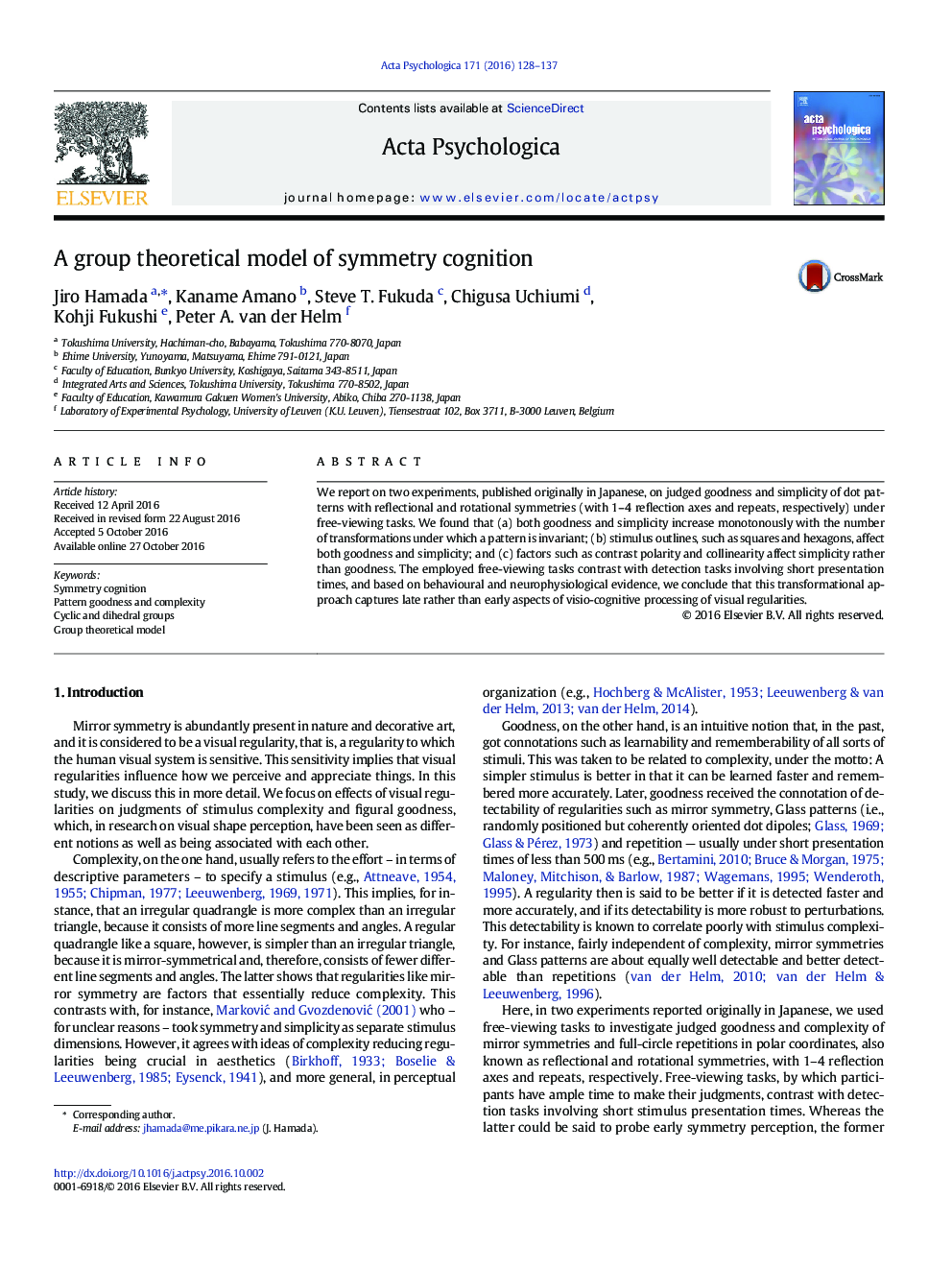| Article ID | Journal | Published Year | Pages | File Type |
|---|---|---|---|---|
| 5040288 | Acta Psychologica | 2016 | 10 Pages |
â¢We report two experiments on symmetry cognition, using free-viewing tasks.â¢Judged goodness and simplicity increased with transformational symmetry group order.â¢Stimulus outlines (squares and hexagons) affected both goodness and simplicity.â¢Contrast polarity and collinearity affected simplicity rather than goodness.â¢Group theory captures late rather than early aspects of symmetry processing.
We report on two experiments, published originally in Japanese, on judged goodness and simplicity of dot patterns with reflectional and rotational symmetries (with 1-4 reflection axes and repeats, respectively) under free-viewing tasks. We found that (a) both goodness and simplicity increase monotonously with the number of transformations under which a pattern is invariant; (b) stimulus outlines, such as squares and hexagons, affect both goodness and simplicity; and (c) factors such as contrast polarity and collinearity affect simplicity rather than goodness. The employed free-viewing tasks contrast with detection tasks involving short presentation times, and based on behavioural and neurophysiological evidence, we conclude that this transformational approach captures late rather than early aspects of visio-cognitive processing of visual regularities.
